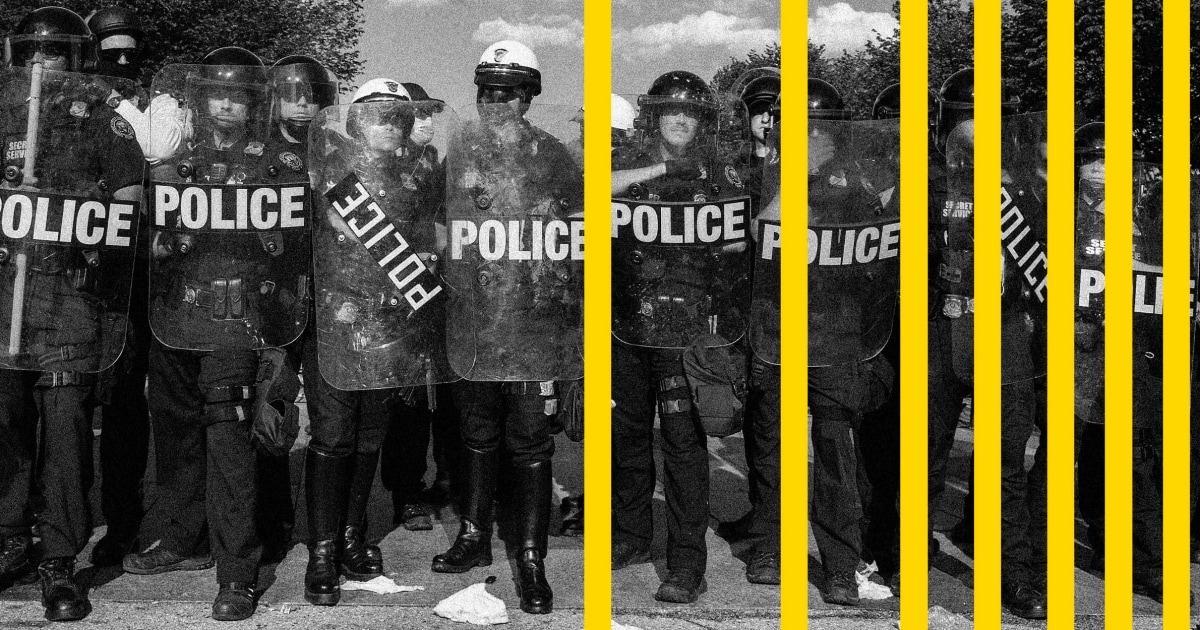
2020 appeared to be a year of racial reckoning in the United States. The fight against systemic racism reverberated throughout the country with protests, boycotts and calls to “defund the police.” But, a year after slashing police budgets in response to the growing defund movement, many cities have restored the funding — seeming to confirm activists’ suspicions that city leaders weren’t serious about the change in the first place.
At least a dozen cities cut their police funding or decreased officer numbers during last summer’s protests against police violence following the killing of George Floyd in May 2020. But one by one, city governments began to bolster their police budgets in 2021, with an additional $200 million allocated to the New York City Police Department and the Los Angeles Police Department seeing a 3 percent increase in the year after the city council approved a $150 million cut.
Tony Williams, a member of the Minneapolis group MPD150, which supports police abolition, in an interview with The Guardian, praised the initial growth in support for cutting or eradicating police budgets as “unprecedented in our movement” for a “police-free future.
But many, like renowned organizer Mariame Kaba, an educator and author focused on the prison industrial complex, sometimes known as PIC, weren’t completely sold on political leaders’ political promises.
“It was my belief that more people would want to engage an abolitionist vision and practice. … But I still think PIC abolition is an unpopular view,” she told NBC News in February.
Among politicians, the idea of defunding the police certainly was unpopular. Then-presidential candidate Joe Biden said last summer that he doesn’t support defunding the police, but supports “conditioning federal aid to police based on whether or not they meet certain basic standards of decency and honorableness.”
The pattern of restoring police budgets seems to align with public opinion of the movement that once made headlines. Last summer, just 11 percent of adults said funding for their local police should be increased “a lot,” according to a Pew Research poll. As of October 2021, that figure is up to 21 percent.
Police and city officials from New York to Los Angeles have cited rising violent crime rates for the reversals, but experts have noted that crime rates fluctuate for various reasons and shouldn’t be solely attributed to police budget cuts. Police staffing shortages and political pressures also contributed to the reversals in several cities. In cities like Burlington, Vermont, that have slashed police budgets, city leaders have struggled to adequately address public safety without relying on traditional policing. Such setbacks are to be expected, said Nikki Jones, a University of California, Berkeley, professor who focuses on race and the criminal justice system.
“When you take policing away, what is required is you have to have other social institutions stepping up,” she said. “And that is going to take time.”
City government leaders faced backlash from law enforcement, elected officials and even some community groups for their decisions to reduce police funding. Now, it seems that departments that last summer lost a portion of their budgets have got their money back.
Last year, outgoing Mayor Bill de Blasio and the city council moved to cut roughly $1 billion from the police’s $6 billion budget and invest it in youth and social services. De Blasio wrote in a tweet then that “Our young people need to be reached, not policed.” But just a year later, officials adopted the city’s largest budget ever, at $98.7 billion, for fiscal year 2022, which included a $200 million increase for police spending.
“Mayor de Blasio has co-opted a lot of language about social movements, but they’ve never translated into reality for us,” said Louis Flores, a member of Fight for NYCHA, a grassroots organization that advocates for those living in housing provided by the New York City Housing Authority. “So when he said $1 billion defund, it was hard to believe.”
The 2022 budget puts the city’s overall police budget at $5.4 billion, with the increase coinciding with an NYPD announcement that crime had risen by 22 percent in May 2021. De Blasio also decided to move forward with plans to build a new NYPD precinct in southeast Queens, reversing a decision to build a community center in the area instead.
“I believe the $1 billion cut was more symbolic rather than substantial,” Flores added. “It was only designed to dissipate the pressure that was mounting on him to do something.”
The mayor’s office did not immediately respond to a request for comment.
Austin, Texas, reversed its police budget cut of $150 million after severe staff shortages and H.B. 1900, a Republican-backed House bill that penalizes Texas cities for cutting their police budgets in some cases and, in others, requires voter approval first. Meanwhile, Baltimore Mayor Brandon Scott proposed a $555 million police budget earlier this year, which would be $28 million more than the year before. The proposal came a year after spearheading an effort as a city councilman to reduce the police budget by $22 million. Officials with the Baltimore mayor’s office could not be reached for comment.
“What we’re seeing is the same politicians who were standing alongside folks calling for … reducing police budgets, are now being reactionary,” Jones said of the reversals. “Perhaps that means a year ago they were also being reactionary, and not actually deeply committed to a project that would extend beyond their election cycle or the budget cycle.”
Last year, Los Angeles Mayor Eric Garcetti seemed to speak directly to organizers’ concerns when he agreed to shift $150 million away from the Los Angeles Police Department and toward community services, telling community leaders, “It starts someplace, and we say we are going to be who we want to be, or we’re going to continue being the killers that we are.”
The move came amid intense pressure from organizers who called for Garcetti to defund the department. But in April 2021, Garcetti proposed an $11.2 billion city budget that allocated a 3 percent budget boost, or $1.76 billion (up from $1.71 billion approved last July), for the department. A Garcetti aide told The Los Angeles Times that the decision was made in response to a rise in crime.
A spokesperson for the Los Angeles mayor’s office did not immediately respond to a request for comment.
Even as police budgets have been funded more, cities have kept some new police reform efforts. In Austin, the Reimagining Public Safety Initiative aims to take a “holistic approach” to reform through assessing racial disparities in policing, use of force policies, and racism within the police department. And California Gov. Gavin Newsom, in September, signed into law a swath of bills to improve police accountability and restrict use of force. In March, de Blasio announced the second phase of a large reform effort that would address poverty-driven criminalization and approaches to substance abuse.
“There is a role for a community-based design for public safety. That hasn’t been really explored because we keep defaulting to police with guns,” Flores said. “They get dispatched on people who are in crisis. We need a public safety system that’s community-designed, where people feel safe. That’s what we’d like to see.”
Source: | This article originally belongs to Nbcnews.com










